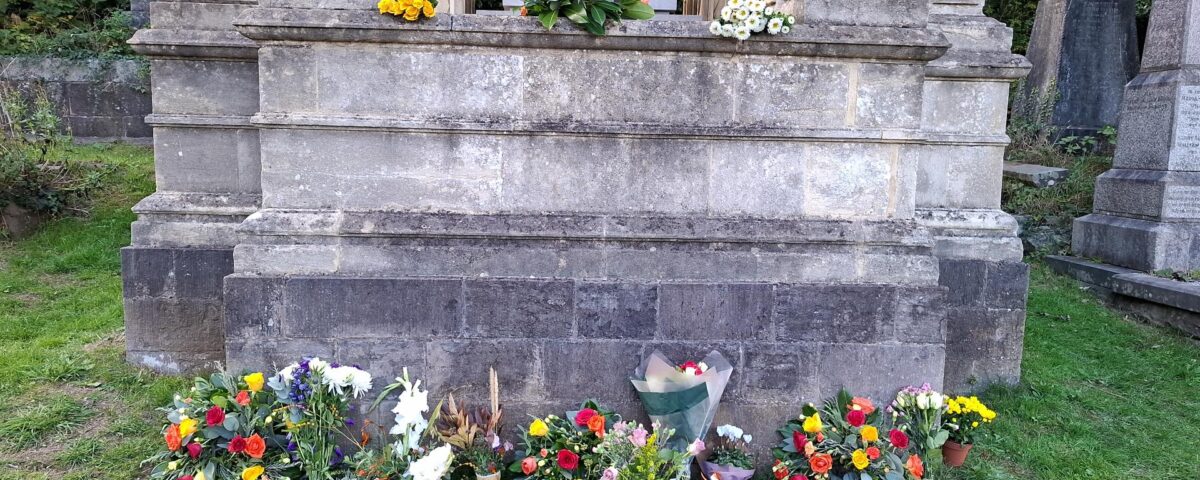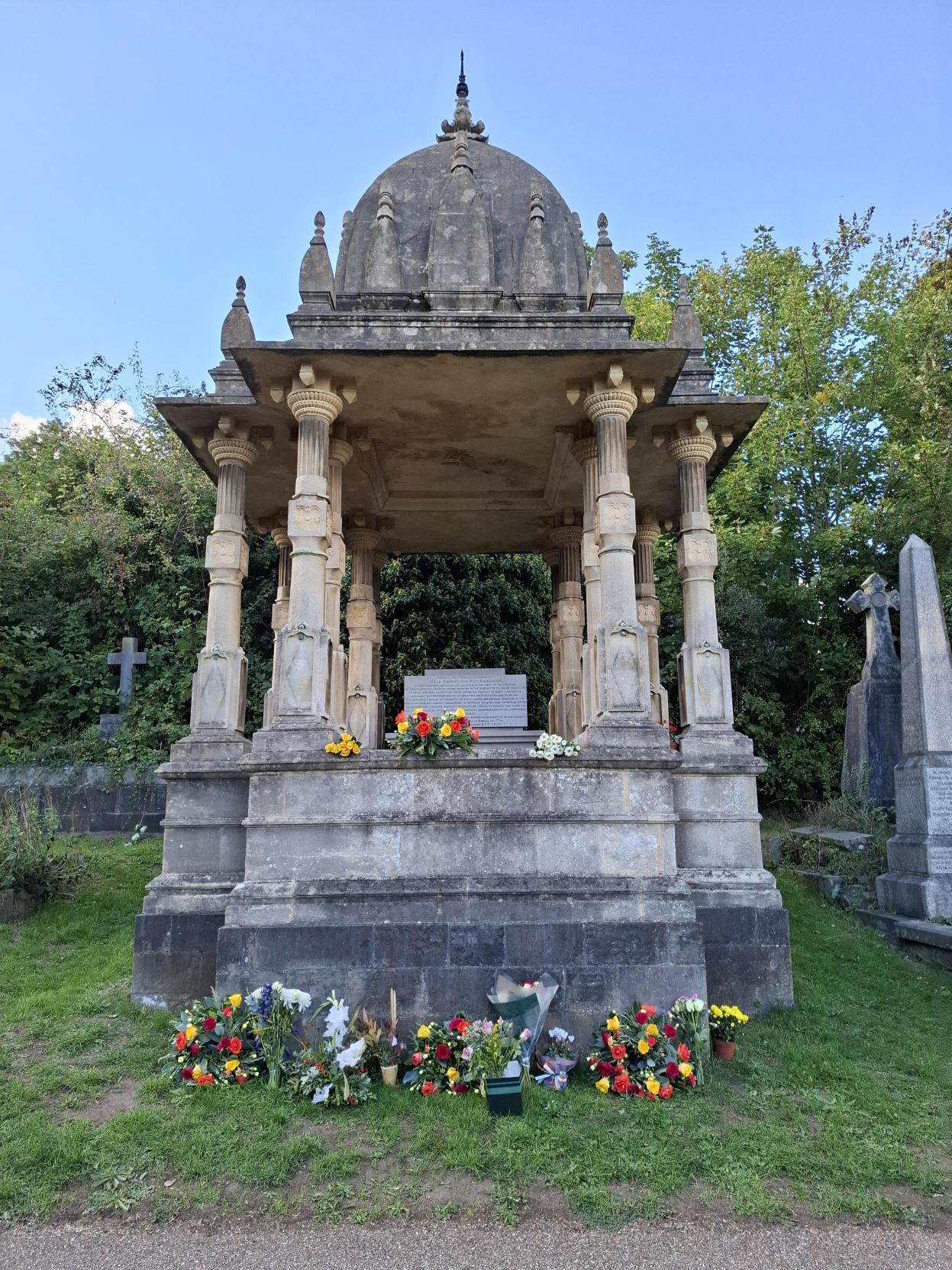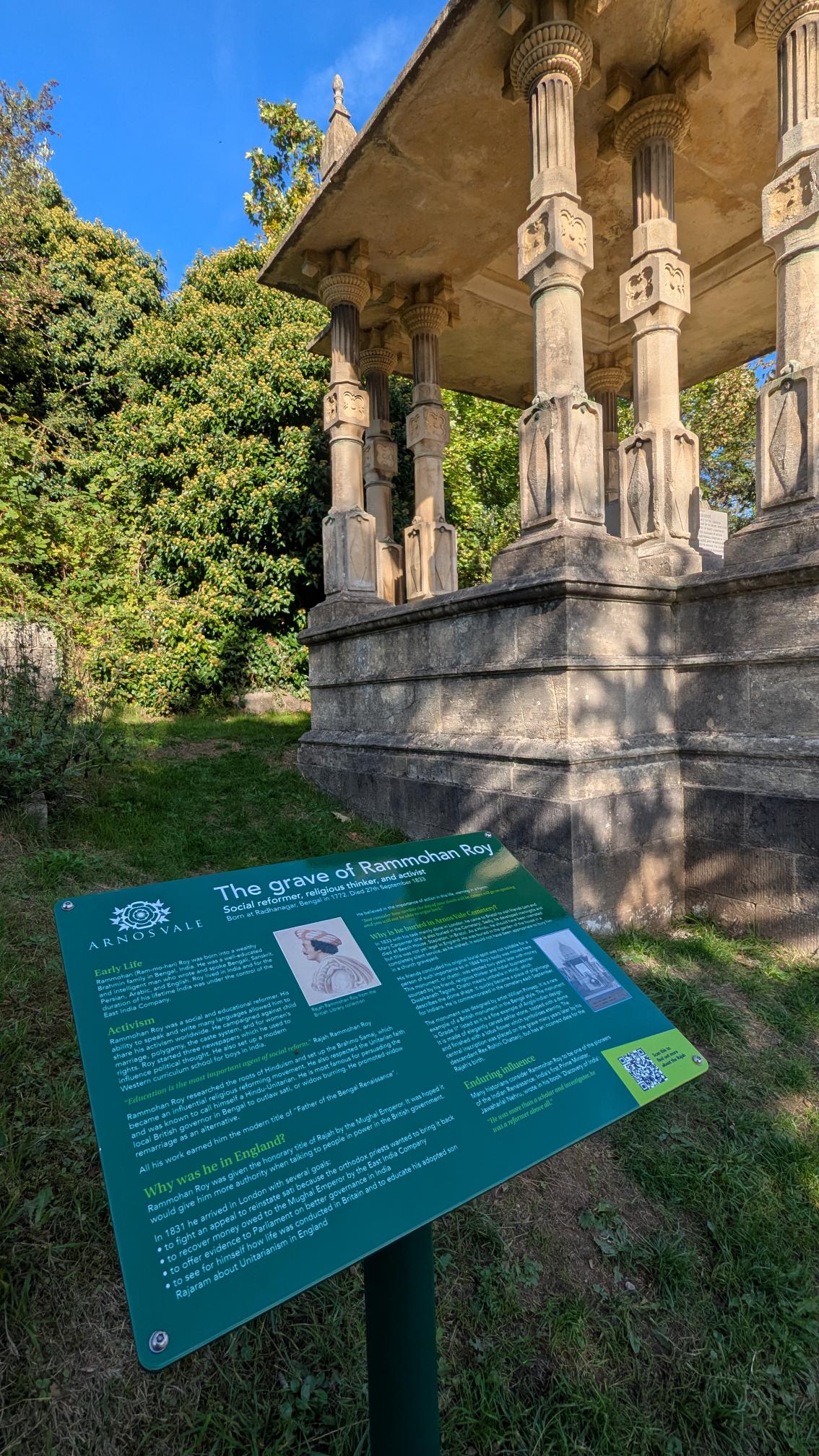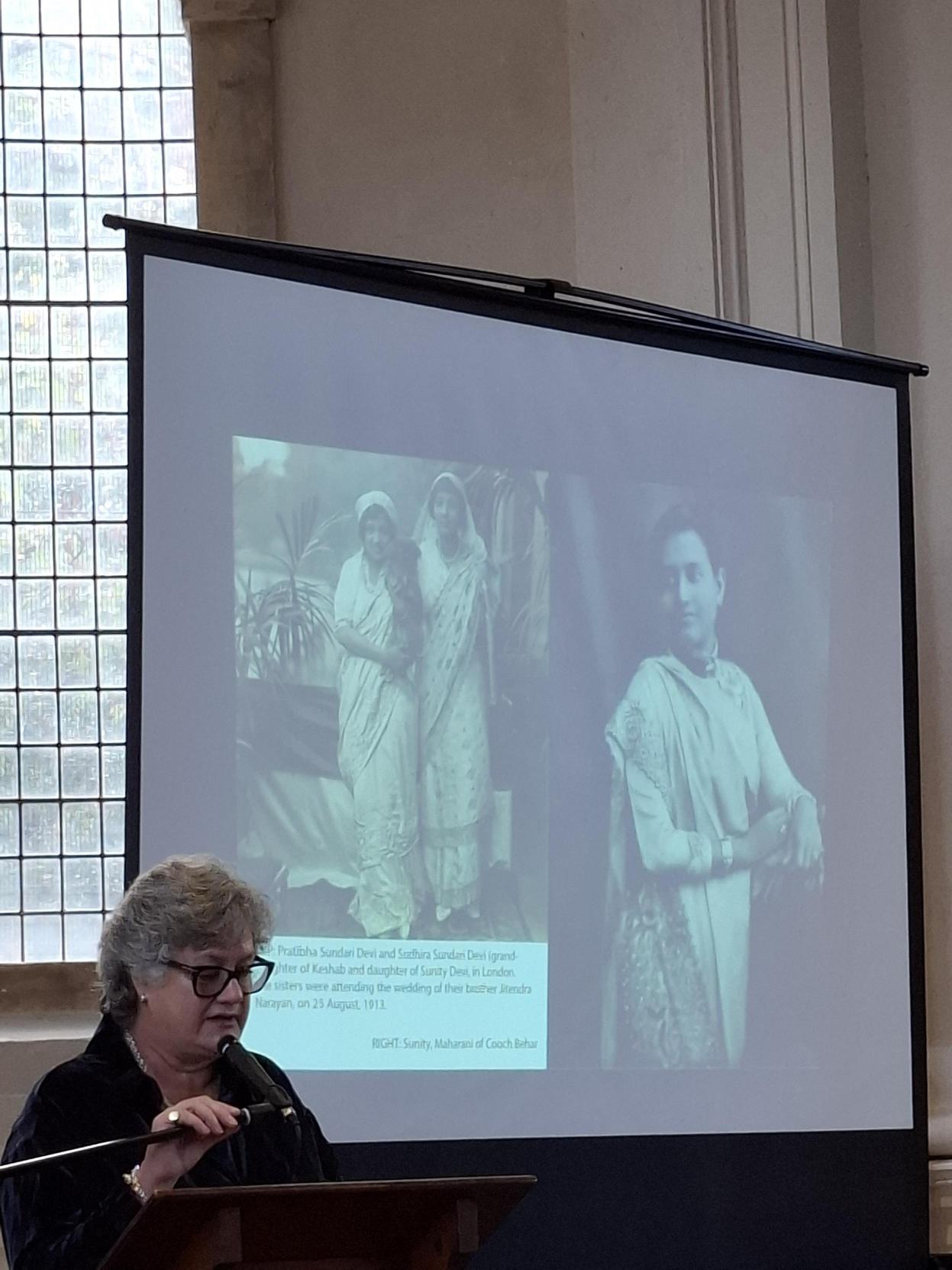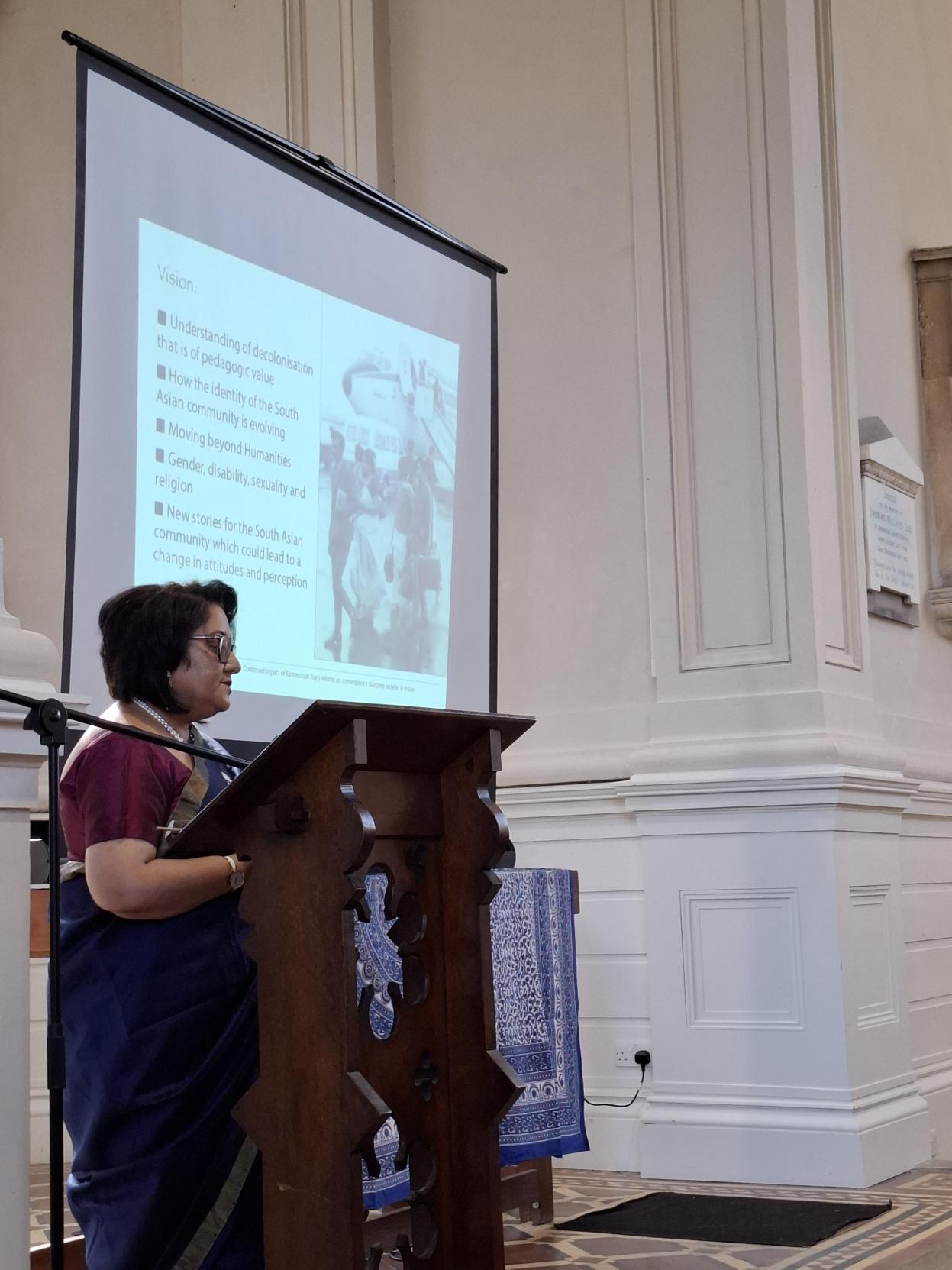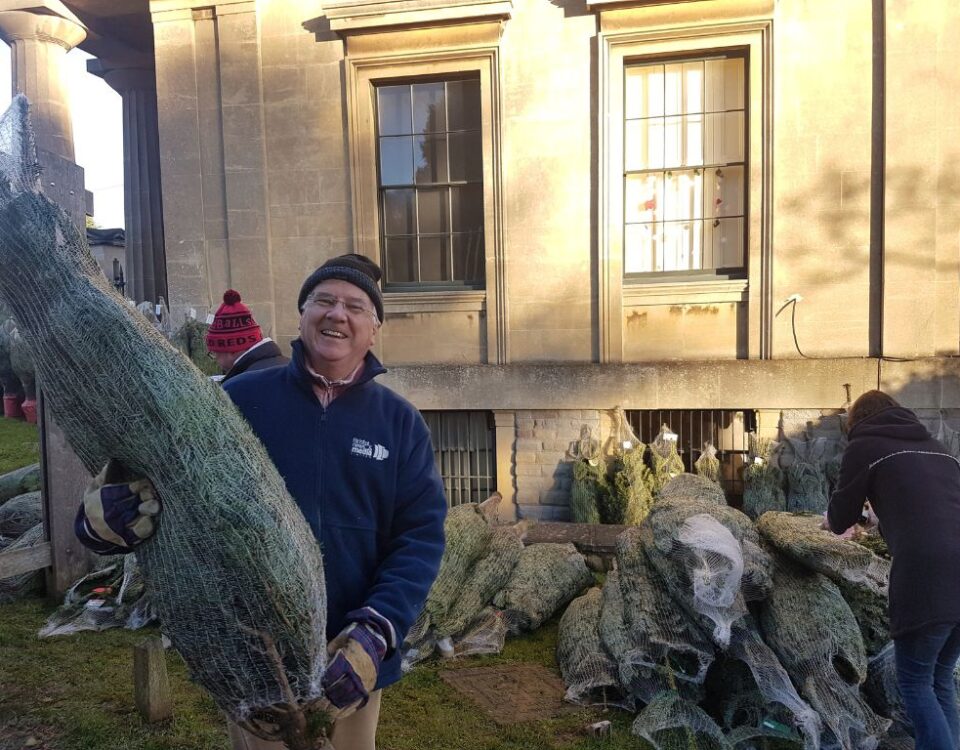
Explore Arnos Vale with the new Bloomberg Connects App
March 31, 2025
Arnos Vale Cemetery Features in Major New TV Drama The Forsytes
October 20, 2025On Sunday 28 September, over a hundred people including local and national dignitaries, community leaders, historians, and members of the public gathered at Arnos Vale Cemetery to remember Rajah Rammohun Roy, a pioneering Indian reformer who died in Bristol in 1833.
The annual event, held on the Sunday closest to the date of his death, brings together people from Bristol, across the UK, and beyond to honour his life and legacy. Rammohun Roy is remembered for his efforts to promote education, challenge social injustice, and support religious freedom.
The ceremony began with a welcome from Ann Fiddler, CEO of the Arnos Vale Cemetery Trust, at Rajah Rammohun Roy’s grave — also known as the Chattri — a beautiful Grade II* listed stone memorial, built in the Victorian era to honour a man whose work still resonates today.
Unveiling of New Information Panel
As part of this year’s commemoration, a new information panel was unveiled by Carla Contractor, Honorary Trustee of Arnos Vale and a dedicated researcher into the Rajah’s life. The panel offers visitors more insight into Rammohun Roy’s achievements and his important ties to Bristol.
Several dignitaries laid beautiful wreaths and flowers and spoke about the Rajah’s life and legacy, including Councillor Henry Michallat, Lord Mayor of Bristol; Mrs Peaches Golding, High Sheriff of Bristol; Harsh Kumar, First Secretary at the Indian High Commission; After the formal flower laying, all attendees were invited to lay their own floral tributes at the Rajah’s tomb.
Reflections and Devotional Songs
Peter Bruce, representing the Frenchay Unitarians, offered reflections and a prayer. This was followed by a Brahmo prayer led by Manoshi Barua, who also sang Bhoy korilay jaray na thakay onnyer bhoy, a devotional song.
Below is an English translation of the song, titled Remembering Him, translated by Deepali Gaskell:
Remembering Him
“Remembering Him, gives you freedom from fear
From others,
Loving Him brings you love of the world.
All the senses He gave you
Support and sustain you...
Yet you forget Him...
...is that wise?
Remembering Him and the knowledge He gave you
Is your support from any fear
Remembering Him
Gives you freedom from fear
From others,
Loving Him brings you love of the world.” © Deepali Gaskill 2025
Presentations in the Anglican Chapel
After the ceremony, visitors gathered in the Anglican Chapel for a series of short presentations. Carla Contractor spoke about the Rajah’s time in Bristol and his local connections. Swagata Ghosh from Bath Spa University discussed how Rammohun Roy’s reformist ideas still influence education and South Asian communities in the UK today. She also invited people to take part in an oral history project, sharing experiences of South Asians in Bristol and the South West. Anyone interested can contact her at s.ghosh2@bathspa.ac.uk.
Mrs Sara Cowie, great-great-granddaughter of Brahmo leader Keshub Chunder Sen, spoke about her ancestor’s visit to Bristol in 1870 and his connection to the Rajah.
The event ended with refreshments, including samosas kindly organised by a member of the Rajah Commemoration Working Group. The event was featured in a BBC Radio Bristol report, which included interviews with attendees. You can listen to the report online (it begins at 1:47:20), and well as an article in Bristol247.
About the Rajah
Rajah Rammohun Roy (1772-1833) was an individual of truly global stature and is buried at Arnos Vale. An extremely influential religious and political thinker, he coined the word "Hinduism" as a term for the diversity of Indian religions and wrote extensively on religious and social matters. He stressed the importance of education for Indians, campaigned for women's rights and worked to end the traditional practice of sati, the burning of widows on the funeral pyres of their husbands.
The Rajah's rare and beautiful tomb is now a listed monument and has long been a place of pilgrimage for Bengalis and Indians. Repaired and conserved in 2008 it is now the site of a commemorative ceremony held on the Sunday nearest the anniversary of the Rajah's death, on 27th September 1833.
The annual remembrance in Bristol is an opportunity for people of all backgrounds to come together, learn more about his contributions, and reflect on how his ideas still matter today.
Sign up for updates
To learn more or attend future events, please visit our what’s on pages, or sign up to our newsletter.
